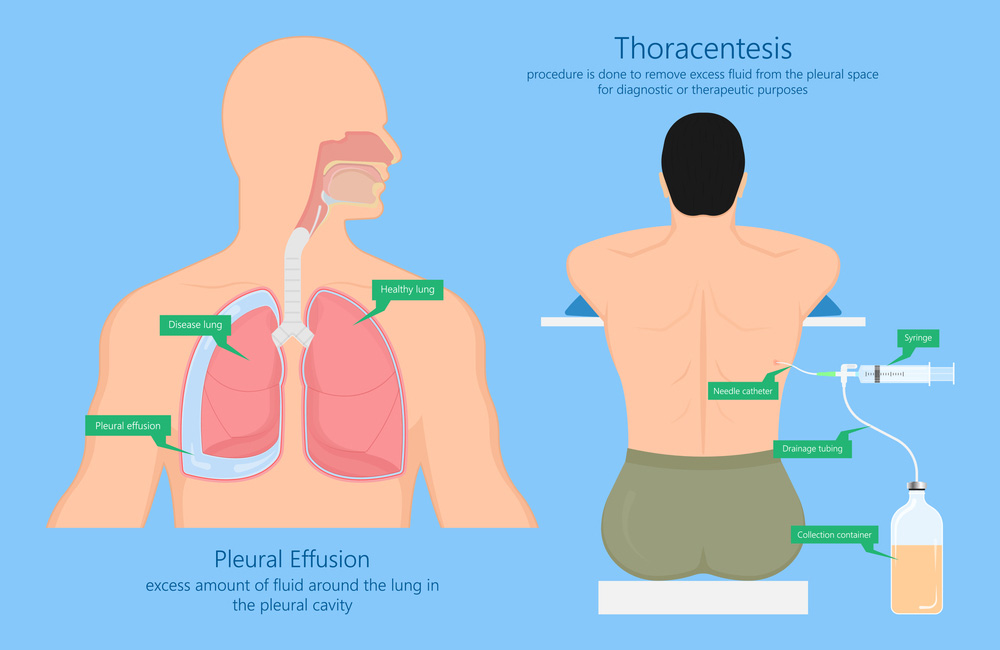
A parapneumonic effusion is a pleural effusion that forms in the pleural space adjacent to a pneumonia. When microorganisms infect the pleural space, a complicated parapneumonic effusion or empyema may result. Prompt therapy of these entities can be lifesaving. The treatment and prognosis of parapneumonic effusion and empyema are reviewed here. The clinical diagnosis of parapneumonic effusion and empyema in adults and management in children are discussed separately.
A parapneumonic effusion refers to the accumulation of fluid in the pleural space in the setting of an adjacent pneumonia.:
- An uncomplicated or simple parapneumonic effusion refers to a free-flowing effusion that is sterile.
- A complicated parapneumonic effusion refers to an effusion that has been infected with bacteria or other microorganisms (eg, positive Gram stain or biochemical evidence of marked inflammation).
- An empyema refers to a collection of pus within the pleural space, which can develop when pyogenic bacteria invade the pleural space, from an adjacent pneumonia, direct inoculation (eg, from blunt trauma) or other source. Empyema that develops from an adjacent pneumonia is a subclass of a complicated parapneumonic effusion. While a complicated parapneumonic effusion and empyema represent a spectrum of infection within the pleural space, no pus is directly visualized in patients with a complicated parapneumonic effusion.
- A complex effusion refers to an effusion with internal loculations (septae).
- A uniloculated effusion is one where the effusion is without internal septae (it is not necessarily free-flowing).